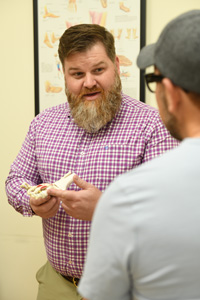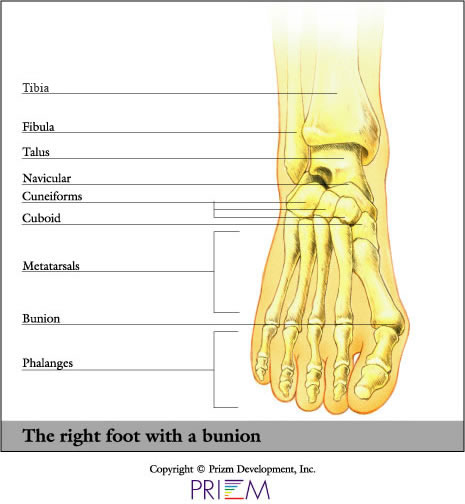Bunions
![]() If the joint that connects your big toe to your foot has a swollen, sore bump, you may have a bunion. More than half the women in America have bunions, which are a common deformity often blamed on wearing tight, narrow shoes and high heels. The board-certified podiatrists at Celebration Orthopaedics specialize in the treatment of foot pain, including bunions.
If the joint that connects your big toe to your foot has a swollen, sore bump, you may have a bunion. More than half the women in America have bunions, which are a common deformity often blamed on wearing tight, narrow shoes and high heels. The board-certified podiatrists at Celebration Orthopaedics specialize in the treatment of foot pain, including bunions.
A bunion is often described as a bump on the side of the big toe, but it is more than that. The visible bump is actually reflecting changes in the bony framework of the front part of the foot. The big toe starts leaning toward the second toe, rather than pointing straight ahead. This causes the bones to be out of alignment, producing the bunion’s “bump.”
Symptoms
With a bunion, the base of your big toe (metatarsophalangeal joint) gets larger and sticks out. The skin over it may become red and tender. Wearing any type of shoe is painful. This joint flexes with every step you take, so the larger your bunion gets, the more it hurts to walk.
Symptoms that occur at the site of the bunion may include:
- Pain or soreness
- Inflammation and redness
- A burning sensation
- Possible numbness
Symptoms often occur when wearing shoes that crowd the toes, such as shoes with a tight toe box or high heels. This may explain why women are more likely to have symptoms than men. Spending long periods of time on your feet can aggravate the symptoms of bunions.
Causes
Bunions are often caused by an inherited faulty mechanical structure of the foot. It is not the bunion itself that is inherited, but certain foot structures that make a person prone to developing a bunion. Although wearing shoes that crowd the toes won’t actually cause bunions, it sometimes makes the deformity get progressively worse. Symptoms may therefore appear sooner.
 Treatment Options
Treatment Options
To reduce the chance of damage to the joint, periodic evaluation and x-rays at Celebration Orthopaedics may be advised. In many cases, some type of treatment is needed. Early treatments are aimed at easing the pain of bunions, but they won’t reverse the deformity itself, include:
- Changes in shoe wear
- Padding is placed over the area of the bunion
- Activity modifications
- Medications, such as Oral nonsteroidal anti-inflammatory drugs (NSAIDs) to reduce pain and inflammation
- Applying an ice pack several times a day helps reduce inflammation and pain
- Custom orthotic devices
If non-surgical treatments fail to relieve bunion pain, or when the pain of a bunion interferes with daily activities, it’s time to discuss surgical options with our foot and ankle surgeons. Together, you can determine if surgery is best for you.
Bunion surgery procedures are designed to remove the “bump” of bone, correct the changes in the bony structure of the foot, and correct soft tissue changes that may also have occurred. The goal of surgery is to reduce pain and discomfort.

 Foot & Ankle
Foot & Ankle